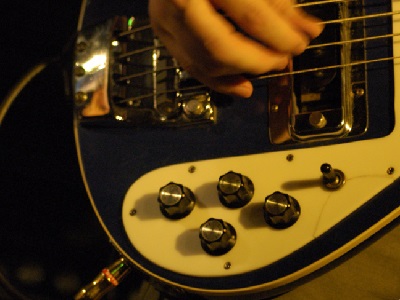Guitar Harmonics – Held & The Millimeter
 Harmonics are some of the most interesting techniques that guitarists, both acoustic and electric respectively, use to liven up their sound.
Harmonics are some of the most interesting techniques that guitarists, both acoustic and electric respectively, use to liven up their sound.
There are many different ways that harmonics can be used within the context of a song, and none of them will ever be long so long as they fit the song and add substance to it without subtracting any value.
In this article, we will talk about to types of harmonics, the first being held harmonics, or simply natural harmonics, and the second being millimeter harmonics, or simply pinched harmonics.
As with any technique, these harmonics will take some time to learn, so remember to be patient when you are practicing. Rome wasn’t built in one night, and your technique won’t perfect itself in one night, either.
What Is Held Harmonic?
Let’s start off first with the “held” harmonic. This is a newer generation’s way of speaking about a natural harmonic, a harmonic that is picked or plucked and left to resonate. The natural harmonic is one of the simplest harmonics. Take your fretting finger and lay it over the twelfth fret of all of your strings.
Don’t fret the strings; just lay the finger across them. Now, pluck a string. You may notice that the sound is a dampened, somewhat higher in pitch version of the twelfth fret note. This is what a harmonic is; a higher, less substantial version of the original note itself.
These harmonics can be used in any context, although they won’t always fit. Try and mess around with them a little bit; add them in different places to create different textures in the sound of your music.
Understanding Millimeter Harmonic
Next up is the “millimeter” harmonic or the pinched harmonic. This note is played very differently from the natural harmonic. For starts, you need to fret a note to play a pinched harmonic. Also, you need to focus on your picking hand, not your fretting hand. Play the fretted note as you would normally.
Now, play it by squeezing the string with your picking hand when you pluck. This makes that “pinched” sound, bringing a harmonic that is of far higher pitch value than a natural harmonic. The next step is to bend the note so that you can sustain it longer and give it a different feel all throughout.
While the natural harmonic is a fairly easy technique, the pinched harmonic will take some time to learn, no matter what name it is currently going by. If you find yourself having trouble, focus on your picking hand and really pinching that string when you play it in order to get the harmonic out of it. Think of it as a natural harmonic in reverse; you want the note to sound, but only in a dampened sense, and then job of your pinching and picking hand is to do this in one simple motion.
Practice your harmonics daily and try using them in different ways. As with any technique, using them too often will make them monotonous and boring, so use them sparingly once you are comfortable.
Video Guitar Lesson From Jamplay
In this video lesson, Erik Mongrain will demonstrate and teach you some of the hardest harmonic moves on the guitar. I guarantee you will be in for a treat to see harmonics being played differently in this manner.
Instructions For Every Guitar Style And Level of Playing Imaginable

Jamplay is the GREATEST online guitar lesson resource that offers step-by-step videos in HD. They cover ALL genres of guitar styles and have exhaustive content for guitar players of any skill level.
Jamplay also features a growing collection of instructional videos that is updated each week. Furthermore, they also offer detailed tutorials for members to learn well known songs with the help of accurate, interactive tablatures and song visualizations.
p.s: We have created a special deal for our readers. Get your exclusive Jamplay promotional code here…






Leave A Comment